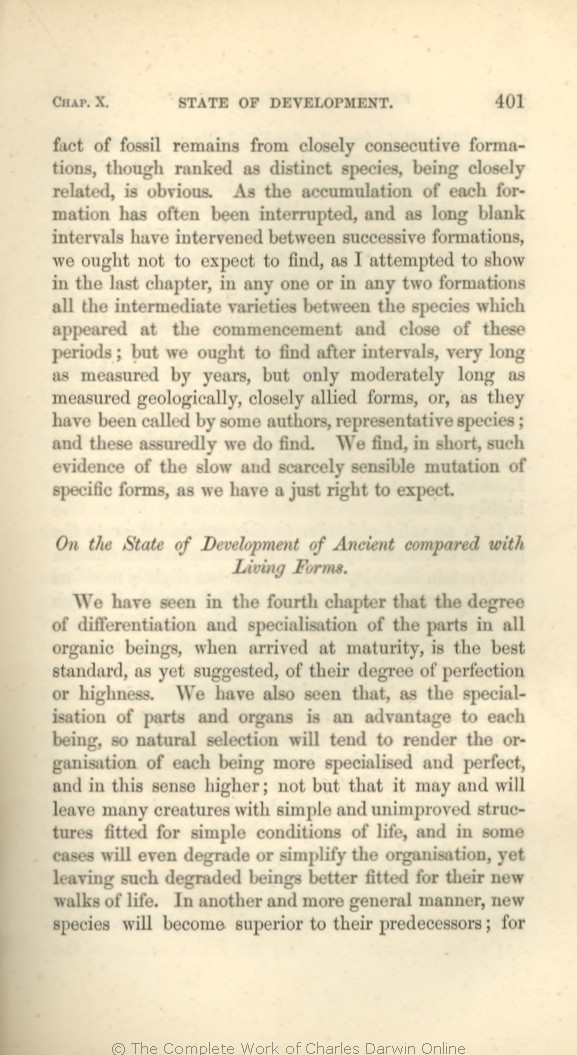fact of | fact of 1859 1860 1861 1866 | fact of 1869 1872 |
| formations, 1859 1860 1861 1866 | | formations 1869 1872 |
| though ranked as distinct species, being closely related, 1859 1860 1861 1866 |
| being closely related, though ranked as distinct species, 1869 1872 |
| in any two 1866 1869 1872 |
| two 1859 1860 1861 |
| formations 1859 1860 1861 1866 1869 | | formations, 1872 |
| periods; 1859 1860 1861 1866 | | periods: 1869 1872 |
| assuredly we 1866 1869 1872 | | we assuredly 1859 1860 1861 |
| mutation 1859 1860 1861 1866 1869 | | mutations 1872 |
| a just 1859 1860 1861 1866 | | the 1869 1872 |
| expect. 1866 1869 1872 | | expect 1859 1860 1861 |
| ..... 1866 1869 1872 | | to 1859 1860 1861 |
| ..... 1866 1869 1872 | | find. 1859 1860 1861 |
|
On
|
On
1866 1872 | |
On
1859 1860 1861 1869 |
|
the
1866 1872 | |
the
1859 1860 1861 1869 |
|
State
1866 1872 | |
state
1859 1860 | |
State
1861 1869 |
|
of
1866 1872 | |
of
1859 1860 1861 1869 |
|
Development
1866 1872 | |
Development
1859 1860 1861 1869 |
|
of
1866 1872 | |
of
1859 1860 1861 1869 |
|
Ancient
1866 1872 | |
Ancient
1859 1860 1861 1869 |
|
compared with Living Forms. 1866 |
|
Forms
.—
1859 1860 |
|
compared with Living Forms.
—
1861 |
|
compared with Living Forms.
1869 |
|
compared with Living Forms
. 1872 |
|
We have seen in the fourth chapter that the degree of differentiation and specialisation of the parts
in
all | all 1861 1866 1869 | all 1872 |
| arrived at 1866 1869 1872 | | come to 1861 |
| that, 1866 1869 1872 | | that 1861 |
| and organs 1861 1866 1869 | and organs 1872 |
| tend 1866 1869 1872 |
| constantly tend thus 1861 |
| and will 1861 1866 1869 | and will 1872 |
| 2 blocks not present in 1861 1866 1869 1872; present in 1859 1860 | | There has been much discussion whether recent forms are more highly developed than ancient.
I will not here enter on this subject, for naturalists have not as yet defined to each other's satisfaction what is meant by high and low forms.
|
| 1 blocks not present in 1859 1860 1861 1866 1869 1872; present in | |
|
| manner, 1866 |
| sense the more recent forms must, on my theory, be higher than the more ancient; for each 1860 |
|









